
9 minute read
Central America's Tarpon Paradise
Costa Rica is wedged in between Nicaragua and Panama in the southern part of Central America. It borders both the Pacific and the Atlantic Ocean and, just as its jungles teem with wildlife, its coastal shores are teeming with exciting and prolific fish species – including tarpon. Big tarpon!

Tarpon (Megalops atlanticus), also known as “Silver Kings”, are a species of fish that has rightfully obtained status as royalty among fly fishermen. In my opinion, these revered behemoths simply cannot be compared with any other sportfish out there.
Large silvery scales, huge eyes, colossal bony mouths and characteristic dorsal fins comprise the external features of these beast that can grow to more than 6 feet and weigh up to 350lbs. They will put every fisherman to the test, both mentally and physically, and they will eventually expose any kind of weakness in your equipment.
Hooking a tarpon warrants one of the most exciting fights you’ll ever experience in your fly fishing carreer. Battling a big tarpon will mark you for the rest of your life, and it’s highly likely that your audience with the Silver King will turn into a life-long obsession. It certainly has for me.
After a long flight and an impressive car ride through the jungle, we finally arrived in Barra del Colorado. Barra is located on the Caribbean coast in the Northwestern part of Costa Rica, close to the Nicaraguan border. The Rio Colorado, the local river, divides the village into two separate parts, North and South - and the place is very calm and peaceful. It feels like time has stood still here.
The small wooden houses along the river are built on stilts to protect them against floods and tides. The children play games on the rudimentary airstrip that was specifically built to bring tourists to the area.
The village people live in harmony with each other surrounded by rich flora, fauna and wildlife. Every morning you will be awoken by the cacophonic sounds of animals. The village truly is a unique destination in the Costa Rican jungle, but the ocean isn’t far away.
A short boat ride from the village takes you to the mouth of the river, and here you can experience what is perhaps the best tarpon fishing in the world.

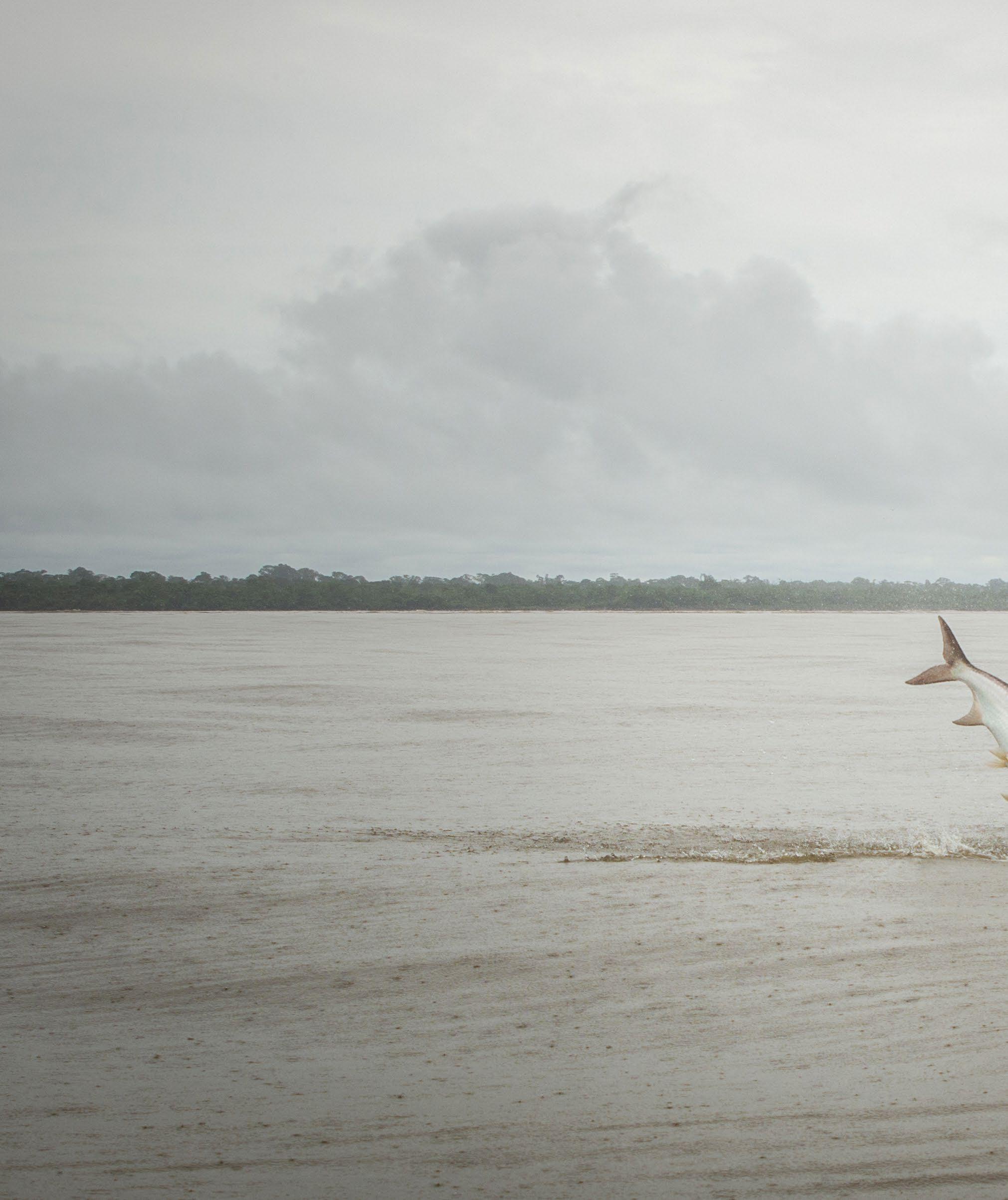
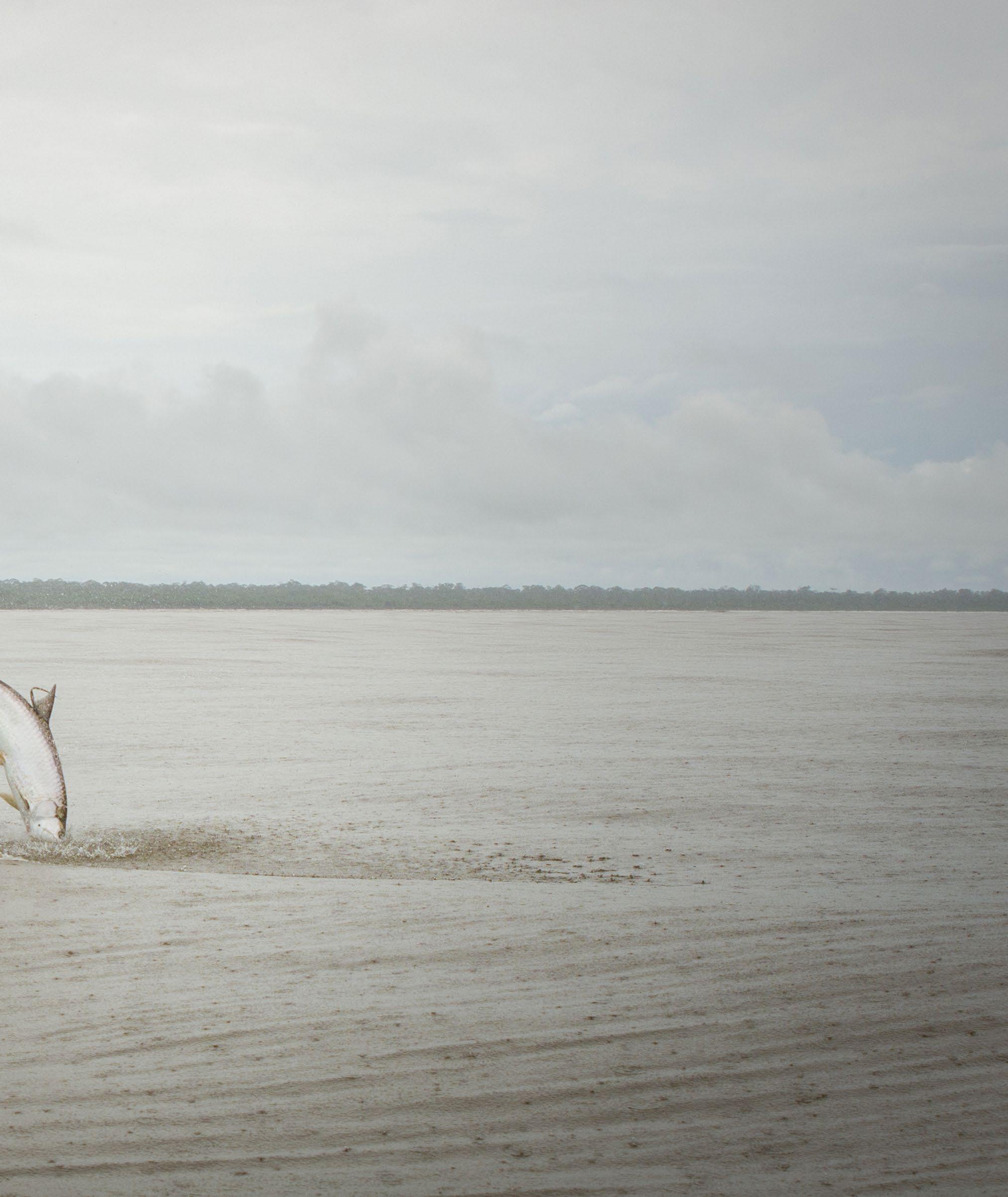
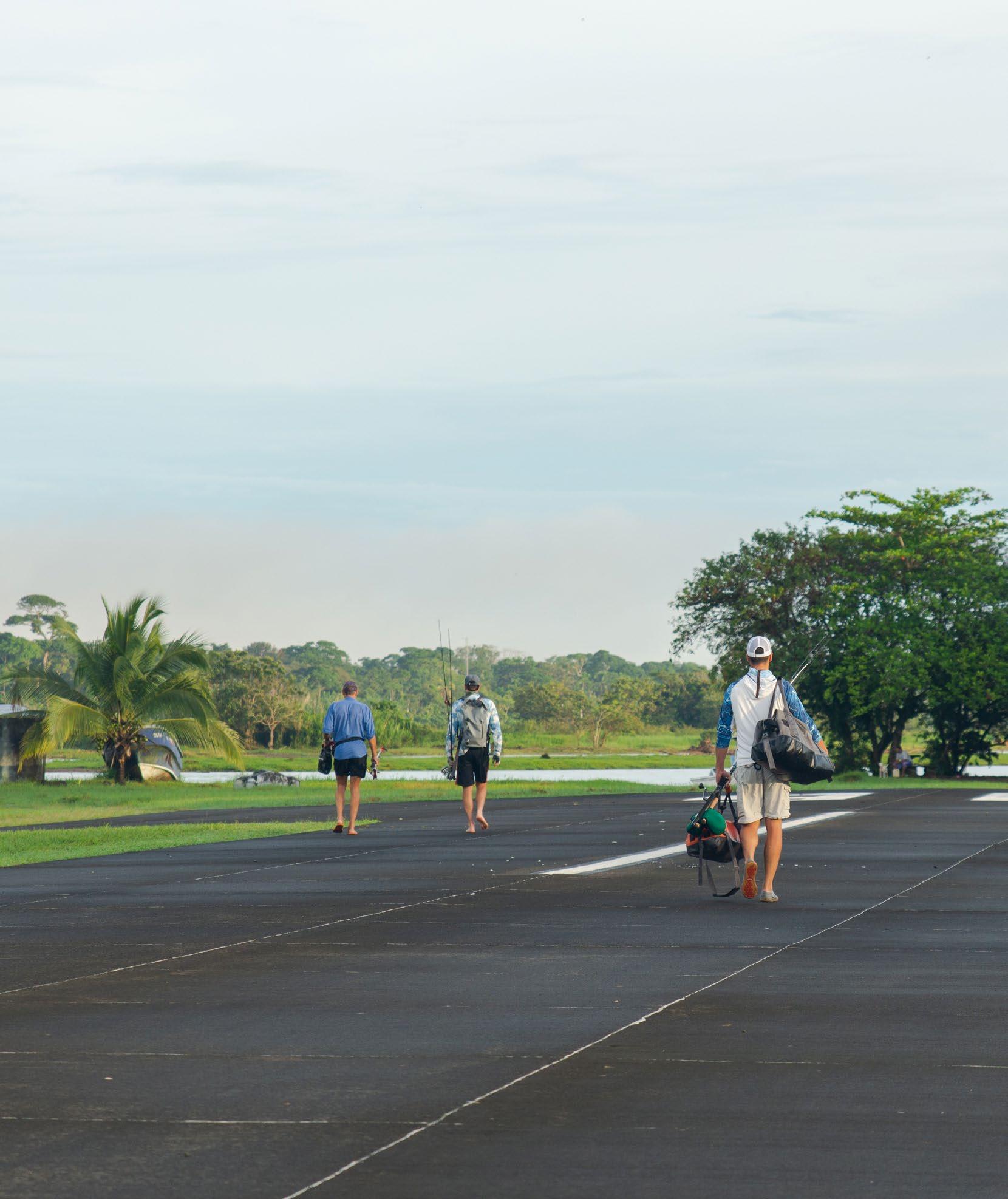
Your first view of the Rio Colorado does not necessarily give you the impression that you have arrived in tarpon paradise. The perpetually mud-brown river flows into the crystal-clear waters of the Caribbean ocean, and the colour contrast, where the current of the river and the sea meets, is very impressive.
The river, which extracts freshwater from Lake Nicaragua, is full of nutrients. Its rich source of food makes the river home to thousands of sardines and other baitfish. Particularly the abundance of baitfish in the mouth of the river makes it an ideal hunting habitat for tarpon. And because of the wealth of food here, they can grow to enormous dimensions. The river delta holds both resident and migrating tarpon, and it is home to the so-called “yellow-belly” tarpon, a mighty fish that resides around the mouth of the river during Fall.
It’s possible to fish all year round in Costa Rica. The peak season for tarpon, however, is during April and May and then again from September to November when the truly monstrous tarpon over 200lbs are around.


The period from January to April is the dry season and during these months there is usually less rain but, instead, chances of strong winds. The rainy season is from May to December. Fortunately, most rainfall occurs during the late afternoon and evening hours, and given the fact that there is typically little wind on the coast, this is the ideal period for fly fishermen.
Yompani, our guide for the week, is already waiting for us with a big smile on his face. This extremely friendly man turns out to have a great deal of experience guiding clients for tarpon. Despite his age, he is still very passionate and fanatic, and his knowledge becomes an indispensable success factor as the week progresses. His fanaticism is perfectly illustrated by the fact that he has already started the engine on his 22’ panga before we have even managed to rig our rods. Only a few minutes later we sail through the surf at the mouth of the Rio Colorado and head out to sea.
Soon, a rolling tarpon shows its presence. A colossal, silver giant that makes my heart beat profusely in my chest. It is something I never seem to get used to, not even after years of tarpon fishing. Adrenaline is pumping through my veins, and I no longer seem to have complete control over my body.
I nervously strip line off the reel and make a few casts to the spot where the silver king broke the surface. I retrieve the fly line with shaky hands, not knowing whether the fish will hit the fly or not.
Fly fishing in the mouth of the turbid Rio Colorado is mainly based on blind casting. To me, this doesn’t make the fishing less exciting. It simply means that at any moment, a huge tarpon may hit the fly – and it keeps you on your toes, psyched and ready for the big tug, at all times. Meanwhile, the frantic activity of rolling and hunting tarpon is increasing. And there are some truly massive fish around! The chaotic sounds of fish hunting and the splashes of fleeing baitfish can be heard all around the boat at times.
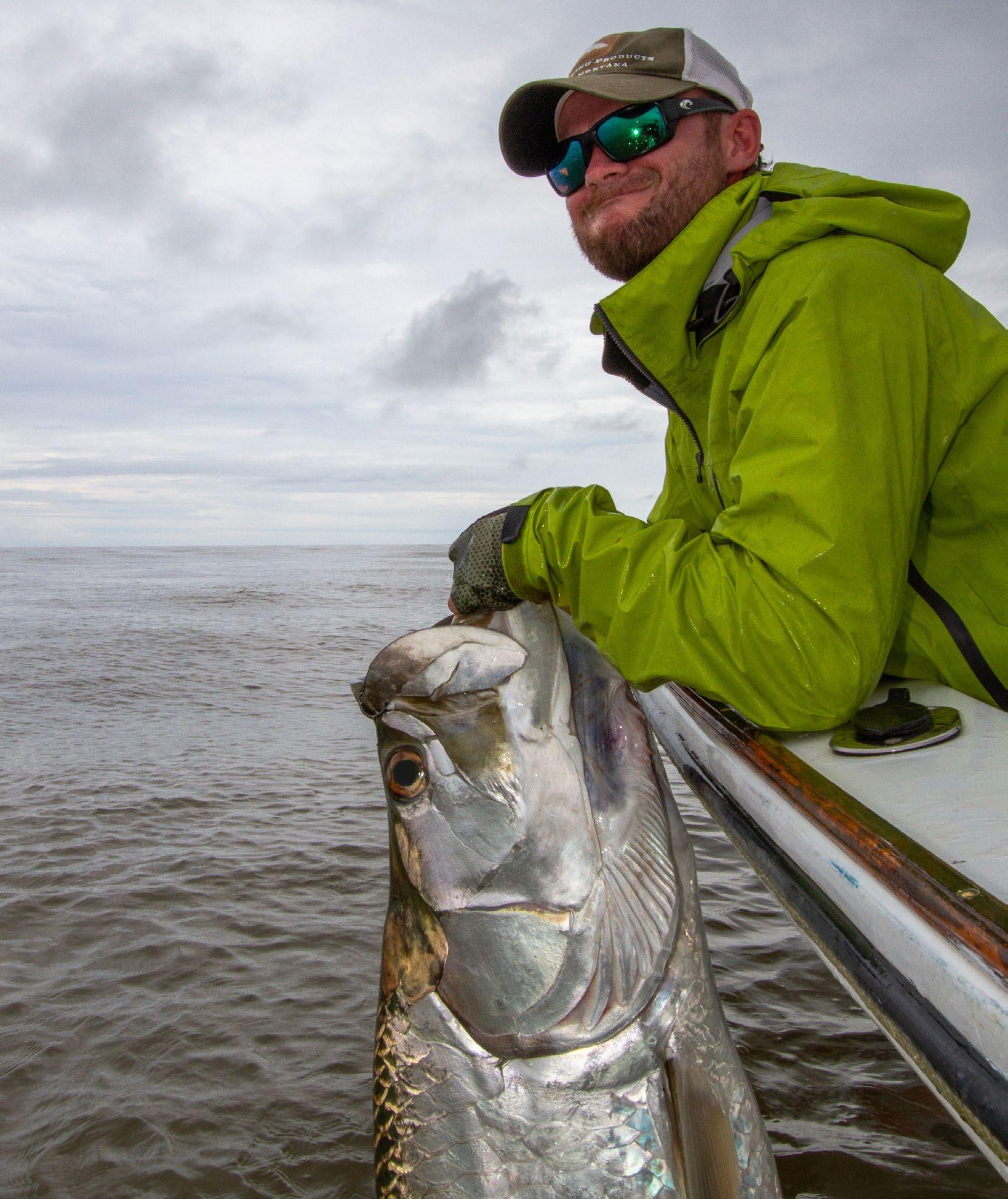

It is wonderful to see the tarpon completely stuffing themselves with bait. And when the water explodes, as dozens of tarpon suddenly hunt simultaneously in the surface, my heart skips a beat. It’s fascinating in all its brutal and chaotic glory. But the question remains: Will they hit a fly?
Suddenly, the fly line is brutally pulled out of my hands. It feels like a high-speed train is taking off with my fly line attached to it, and when I come to my senses and strip-set the hook, a tarpon jumps meter-high into the air and rattles its gills in an attempt to shake off the fly.
I bow respectfully to the King, lowering the rod tip as the fish leaps, in order to prevent it from spitting the hook. But after the umpteenth jump, the fly suddenly shoots out of the mouth of the tarpon. I look at the crater, the fish left behind after cart-wheeling back into the water surface – with shock and disappointment. It is all part of it, however - Its tarpon fishing! On average, you land 1 in 6 tarpon you hook. It is not the first or only time this happens during the week. A tarpon’s mouth is way too bony and hard to effectively set the hook and land more than a modest percentage of the ones that hit your fly.

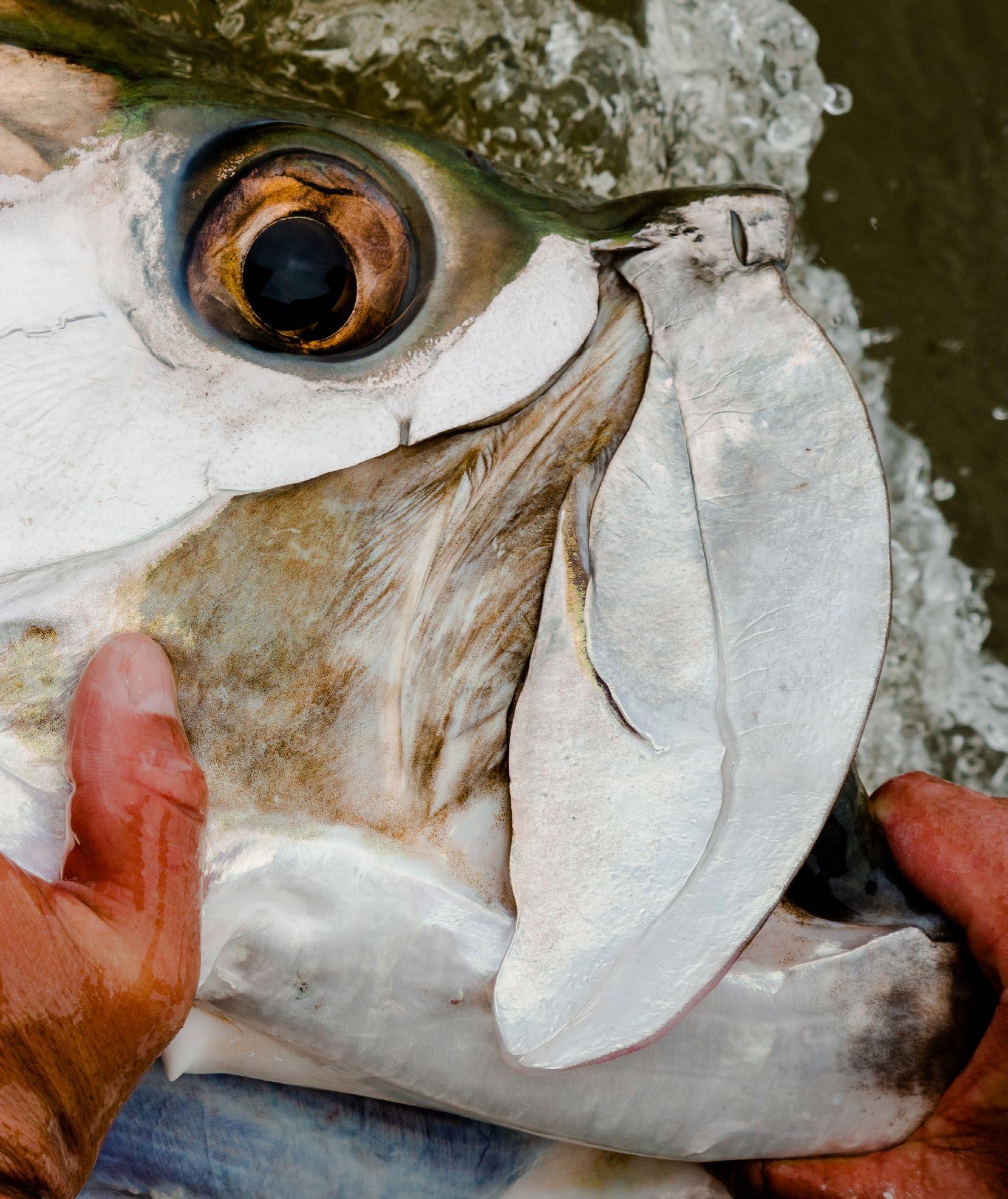
Tarpon fishing is perhaps the most challenging and exciting fishery out there. And when targeting tarpon, euphoria and disappointment are closely linked together. You need a bit of luck to land a giant from a boat, but during our week in Costa Rica we were fortunate enough to have very few complaints in that regard. Exciting and heady fights, runs far into the backing and spectacular leaps were plentiful, and one unforgettable moment followed the other.
When you’ve finally tamed the king and drained him of much of his energy, it is time to quickly marvel at his splendor, unhook him, and release him back into the ocean. He’s entitled to the freedom!
Along the boatside, his beautiful silver scales flicker and reflect in the sunlight with unbelievably beautiful details, and his chrome flanks and powerful motor – the deeply forked tail – invariantly command respect. His soulful eyes tell stories from the deep, of a mysterious life, as ruthless as it is pure – a life filled with drama. Fighting a colossal monster like the Silver King is breathtakingly exciting from start till finish, and all the skills, you have developed throughout the years as a fly fisherman, are put to the test. The king doesn’t like being tinkered with in his own palace!
If you make even a slight mistake, the Silver King will punish you mercilessly. Taking a break during the fatiguing fight? Forget it! This means the tarpon will rest too. Your job is to prevent it from ever refueling or reenergizing. An effective way to do that is to keep the tarpon off balance by applying a steady, low-side pressure in the opposite direction of where the tarpon turns. It’s what the tarpon cracks call “down and dirty”.
Costa Rican tarpon can reach enormous sizes. During our trip, we caught fish ranging from 60 to 180lbs. Not surprisingly, these fish require a heavy outfit. A 9’ 12-weight rod is an absolute minimum, especially since you don’t want to fight a big tarpon for too long.
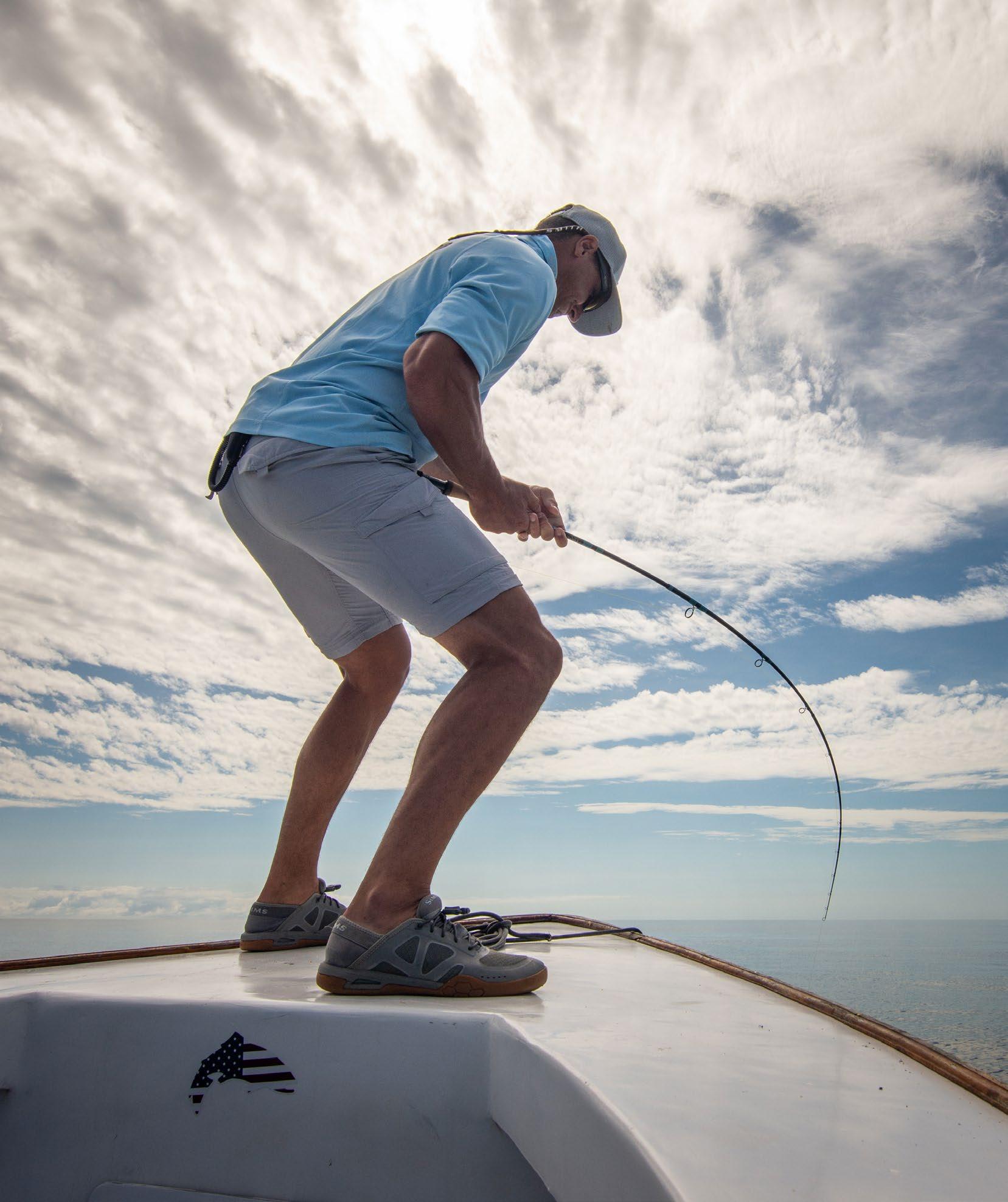
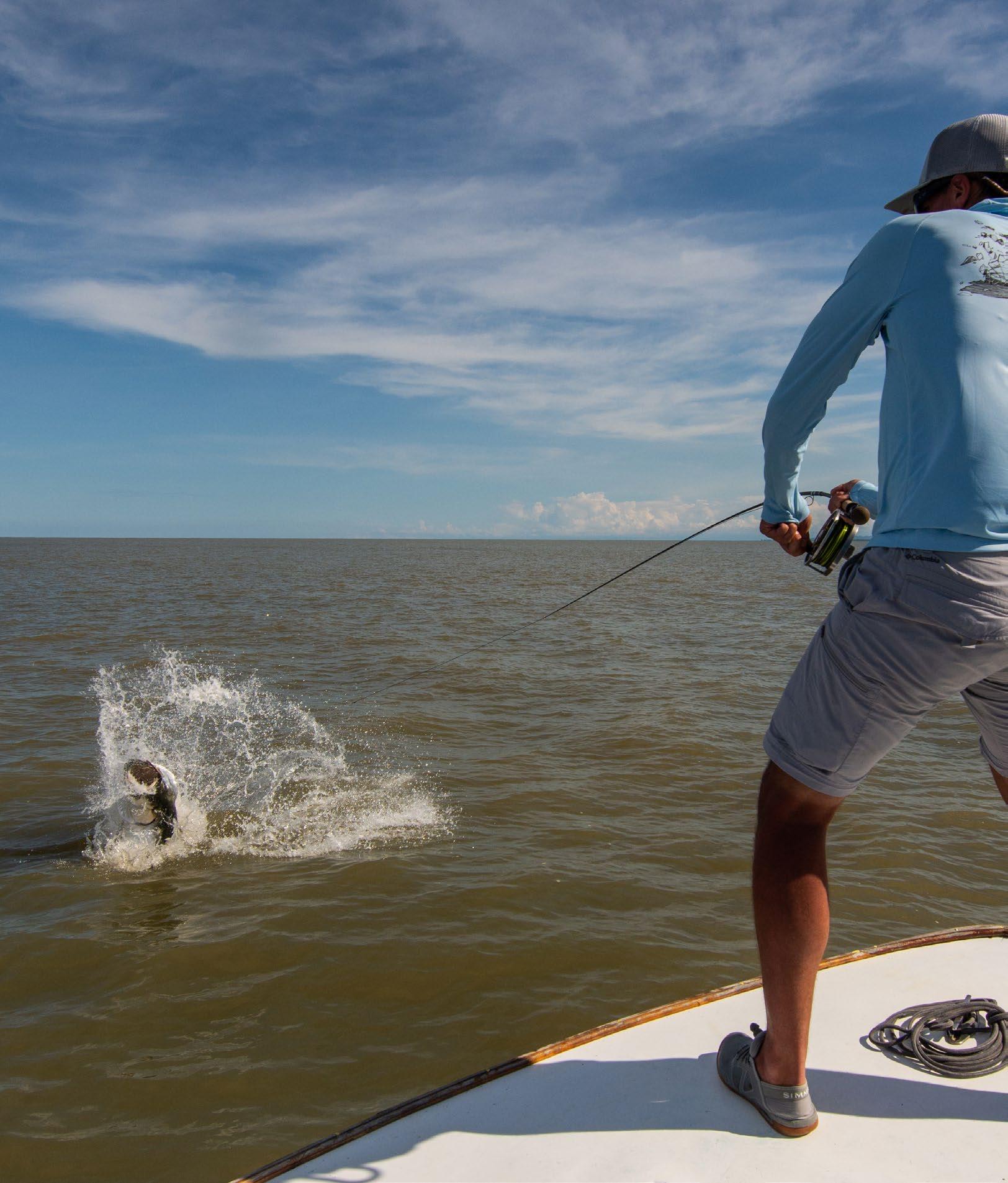


Within 25 minutes, we had landed the biggest fish of the trip, taken a photo and released it. In other words, it’s not necessary to fight a tarpon for hours if you keep the pressure on the fish. It deserves to be released with some leftover energy reserves.
A good quality saltwater reel with a smooth drag system and a minimum of 300 yards of backing is essential to stop the Silver King. A fast sinking tropical fly line, such as the Scientific Anglers Amplitude Big Water Taper, ensures that the streamer quickly reaches the right depth and is not hindered by the ever-present current in the estuary.
As a leader, we used 5ft of straight 100 to 150lb fluorocarbon. Deceivers, minnows and bunker streamers in different colors and sizes tied on strong saltwater hooks were our favorite flies.
Costa Rica has only made me more of a tarpon addict, and I’m now licking my wounds and preparing for another round with the Silver King. Are you ready to enter the battle? Well, what are you waiting for? The Costa Rican tarpon are hungry and aggressive, and tons of unforgettable experiences are waiting to be etched into your memory.









